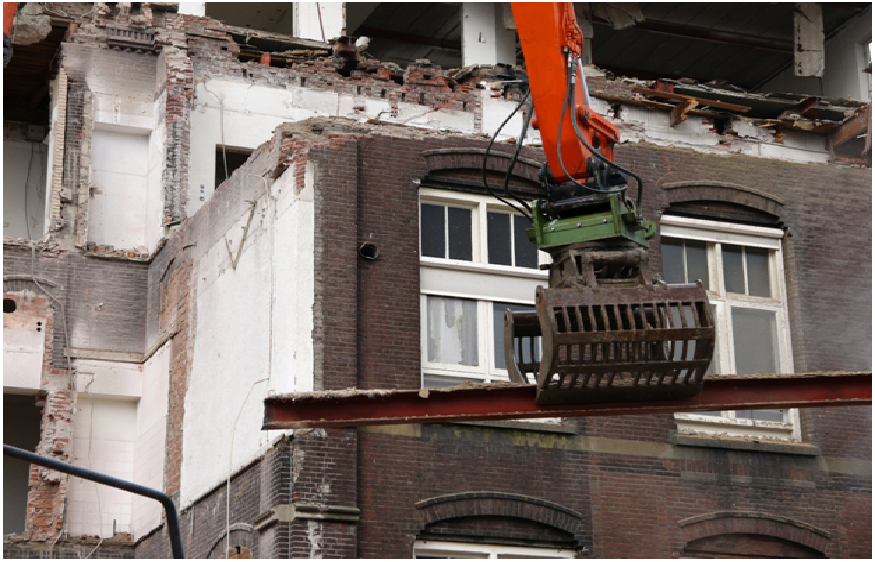Old buildings have stories to tell. They show the growth, change and education of a city. But some buildings attain a state where care is not enough. This how- to describes how the professionals come to agree that removal is the thing to do, and how this can still keep the history and also make for the safety of the people. The question is a result, not a positive strike.
Signs a Building Is Unsafe
Safety is the first consideration. Inspectors and architects look for simple signs which anyone may note, and for hidden dangers to be revealed through tests. When enough of these signs come together, the choice is madeto protect the public, stabilize if possible, or make plans for removal of the structure. Check out https://www.quora.com/What-are-some-sign-of-a-structurally-unsafe-building for more signs.
- Large cracks which keep increasing in the walls or foundations.
- Drooping floors or ceilings, tending to give the impression of softness or flexibilities with light loads.
- Bulging bricks, leaning chimneys or frames which are not now plumb.
- Rot, termites or fire damage which have made weak legs for important supporting beams.
- Leaks or hastily percolating water which rusts fastenings and provides food for mold in cavities.
- Danger marking tests which indicate heavy costs for asbestos abatement or dangerous lead paint.
When several of these warnings are noticed in conjunction, crews are about putting up barricades and requesting a speedy report in a structural way through the organization. When the risk is severe overnight, fences and signals go up with the morning sun.
Historical vs. Modern Codes
A theatre of a century or so would charm the eye, but it was built for a different playing to a different rulebook. The present civilization has larger crowds to care for, throwing a heavy business on the equipment, has more stringent rules about exits from theatres, safeguards against fire, sprinklers, effective wiring, and protection against earthquakes or winds. At the same time, the basic bones may need to have improvements made to them. Even carefully bringing the building back to the original is going to completely change what is retaining the building.
When the hole is too much then the groups compare damage. They may try to do selected destruction which tears out only the unsafe areas or floors but allows a safe from unsafe core. The owners may be working with local contractors like demolition contractor Valley Forge. Whose job it is to do logistics, permits, and how to safely have access to machines and crew. The service contractors close by make it convenient, but also readily visible to neighbors, but also the city workers.
Good groups build small tests to show how the improvements would work.
Urban Renewal and Zoning
Even buildings of a stable realty constantly may not be in the best place for today. Cities reapportion their maps to place houses where there are transit facilities nearby, or up ground floor levels so flood threat is avoided, wider sidewalks, but also an open greenway. In those cases, the planning authority’s interests are memory against public safety, ease of access and climate goals.
A vacant mill may barricade a new busway. A low storefront may occupy a site where the need most is for higher and mixed housing. Notices plainly seen, dust control measures, and planned haul routes calm the daily life of the area of work. Public history markers or art may keep special memory to the corner although the building has gone.
Salvaging Heritage Materials
The tearing down of the building does not mean throwing the rest of it away. That is to say the majority of the building may have another life. Deconstruction teams strip items before machinery arrives: heart pine joists, slate, copper drains, handmade brick, solid doors with old hardware. These items go to local shops, artists, and builders who know how to get proper usage out of them.
The work is simple, but it is disciplined. The crews label and stack items by type and size of material. Paint and coverings are tested before cleaning. Split timbers that are too small for beams become shelving or trim. Salvage respects history in a tangible way, but it also avoids using new material and reduces machine surplus. A brief salvage report allows buyers to trace all goods back to the address. The crews’ stage roll-off containers to keep the streams of reuse, recycle, or garbage clear.
What Happens to the Debris
At the end of the last wall, the operation becomes one of sorting. Clear piles and careful records help more material to evade the dump. With the right type of planning, even the chips become useful again. Here is where construction debris hauling meets the daily rules of simple recycling on a larger scale.Click here to know more about recycling and its benefits.
- Stones and brick are crushed for road base or new slab fill.
- Steel is picked with magnets and sent back to the mill, where it is re-melted and rolled.
- Clean wood is turned into mulch, compost bulking, or reclaimed boards for future buildings.
- Drywall is treated so that gypsum again goes back to the boards, or new wallboard lines.
- Asphalt shingles are ground into hot mix for paving, eliminating the need for virgin oil.
In all these operations, simple tools instill order: labeled cabinets, clear ways for the truck passage, and the proper roll-off receptacles for each stream. Careful running records tell where the materials went and how much was reused. In the case of a modest building, the report is brief. In the case of a large site, it reads like a small volume on logistics. In either case, the aim is the same, speed, safety, and a clean slate for something else.
At the end an old building is taken down for reasons both human and technical, safety, law, and the shape of a growing city. With good planning—selective demolition where it aids, disposal of salvage affectedly, and smooth hauling—the respect is given to the past, while something new is given space for the future. Thoughtful site clearing protects neighbors, is kind to the street. The responsible crews treat the asbestos abatement properly, so that the people and ground are healthy.

